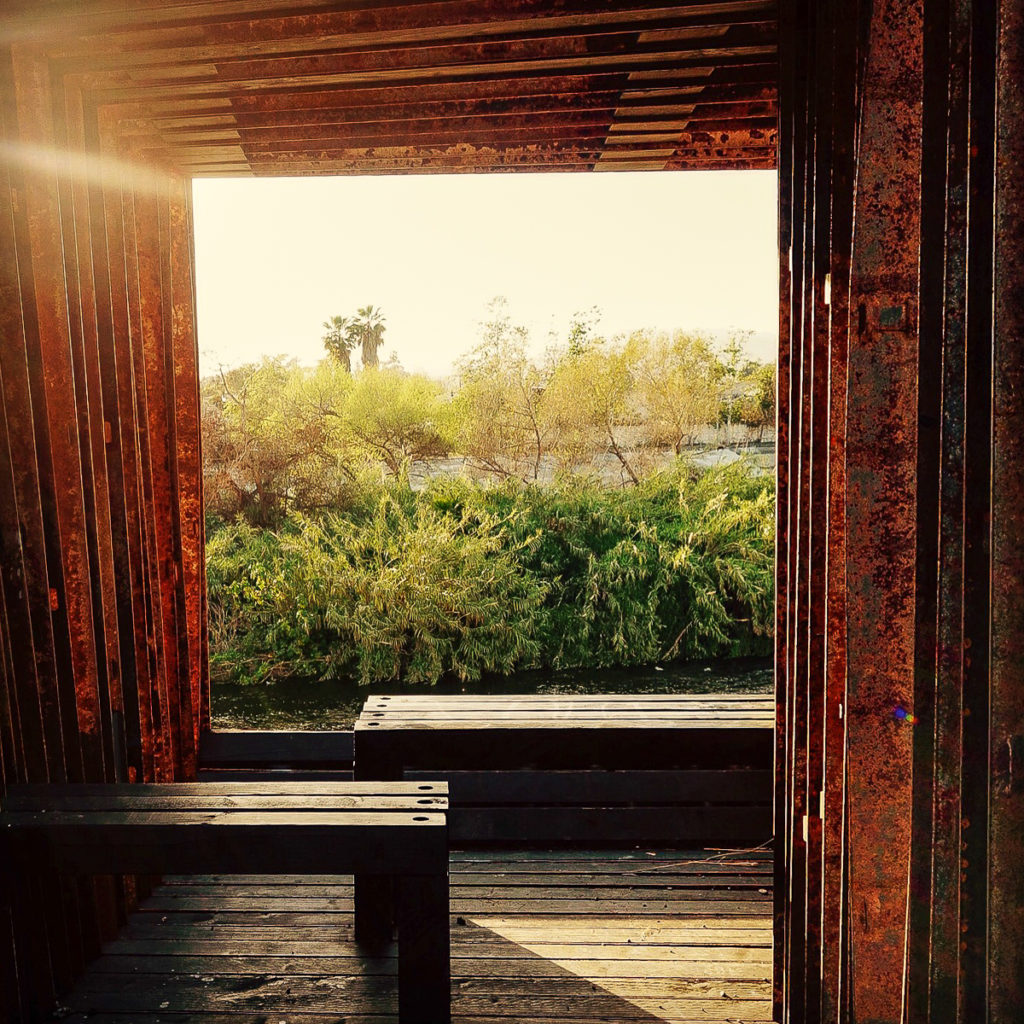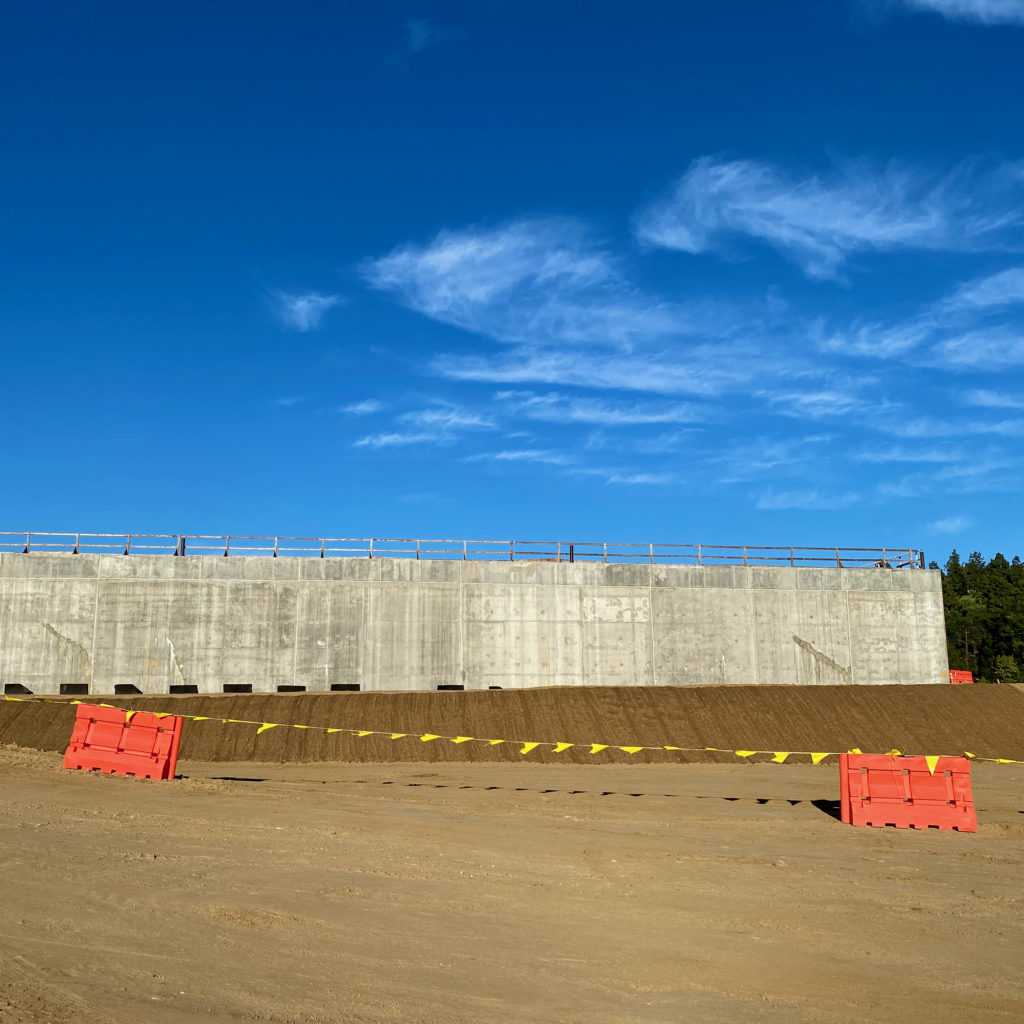This month, our Get to Know column offers an invitation to dive into the sea of projects that are underway to reclaim and revive the LA River. You may know the river as not really a river, but a concrete corridor you drive over occasionally. After a devastating flood in 1938, the natural river was surrounded with concrete by the Army Corps of Engineers – an important protective project that nonetheless meant that the river ceased being part of the active lives of citizens. In fact, most of us have forgotten it was actually ever a river. But – consider how most major cities are defined by rivers (London, Paris, NY, Boston, etc.) and it’s understandable that environmentalists and urban planners want to reclaim the LA River.

The question is how.
Frank Gehry, the beloved 91-year old architect, is a potent visionary for the revitalization of the LA River, and in concert with an impressive, but sprawling, group of nonprofits, city departments, philanthropists and artists is working figure out how to transform it. With 51 miles of concrete that runs from Canoga Park to Long Beach, this is a feat of coordination, compromise, and endless debate. There is a Masterplan under review right now – one that has recently been revamped – and corporate and private dollars are already going into projects that have active government funding. Gehry envisions the LA River’s Masterplan as providing a connective tissue that can improve communities along its banks, and in his planning has prioritized the areas which are most in need of transformation.
Gehry and his firm Gehry Partners, in conjunction with several partners, studied data about health disparities, pollution, and environmental impact along the river’s banks to assess which parts of the River should be prioritized for development. Development projects include updating infrastructure, increasing green space, constructing housing( including affordable housing and live/work buildings), improving water quality, and the addition of bridges and bike paths. Currently, 21 separate projects are underway. The City of LA, real estate investors, and Individual and foundational philanthropy will all be needed to support a myriad of public/private partnerships.
Here is the LA River Masterplan website, where you can see April’s proposed draft and sign up to be updated on changes going forward.
Headspace is a clear example of the best of what can evolve from the Masterplan: here’s a photo of a key infrastructure upgrade (an underground water storage facility in Burbank that replaces above ground facilities at Silverlake and Glendale). Headworks was built with public money, and although it looks like a concrete monolith right now, organizations such as LA RiverWorks are raising money to erect a green park atop the concrete that has been designed by Frank Gehry and Mia Lehrer.

Cleaner, better water is being protected and produced; beautifying green space is under plan; and, the community is working together to get it done.
What happens along the LA River is a complex topic, but a timely one. The city’s comprehensive Masterplan has been getting a revamp over the past few years; it was just formally presented in April and is currently under review. The video below explains the scope of the project, which will include a multitude of projects geared at turning empty spaces along the river into livable spaces.
This is an ongoing story about our city, one underlined by the heath disparities laid bare by the pandemic, and an important topic to watch going forward.
Here’s how to learn more:
- The LA Times interviewed Gehry recently about his role in the River’s revitalization.
2. This Curbed LA article is from 2019 and hasn’t been updated recently, but has a great map and is replete with information about various projects along the river.
3. An LAist article about the history of the river is useful.
4. An article from the Rand Corporation’s blog explains all the various organizations that are working on and competing with each other to control the overall narrative of how the gigantic project proceeds.
The length of the LA River itself can both help and hinder revitalization plans. On one hand, it touches more people and communities who could support and benefit from a revitalized river. On the other, it also means that there are many potential stakeholders with varying needs and goals. A major challenge for planning is to come up with a unified and comprehensive plan. Different organizations have offered possible answers for the river’s future at different scales. Some, such as the County’s Los Angeles River Master Plan or the City’s Los Angeles River Revitalization Master Plan, are large-scale. Others, such as the Department of Water and Power’s “One Water LA” or the LA River Ecosystem Restoration Plan, are more focused on a particular topic or area.
The substance of these plans differs as well. For example, the LA River Downtown Design Dialogue seeks to foster interactions between human and natural systems in a bustling oasis. The LA Sustainable Water Project seeks to use the river to enhance local water supply and improve water quality. Friends of the Los Angeles River advocate for habitat restoration and public access. Still other plans are focused on different stretches of the river, rather than treating it as a whole, highlighting the need for a coordinated master plan that integrates planning across both upstream and downstream segments of the river.
Keren Zhu, J. Luke Irwin, Stephanie Tanverakul, and Timothy R. Gulden

